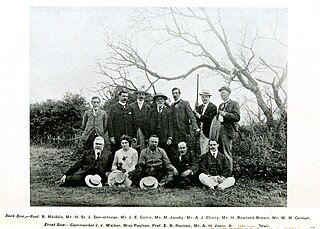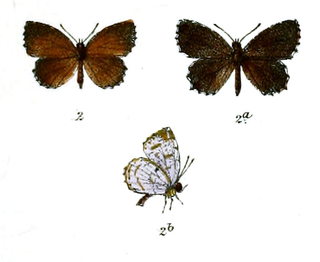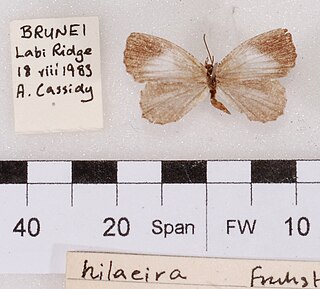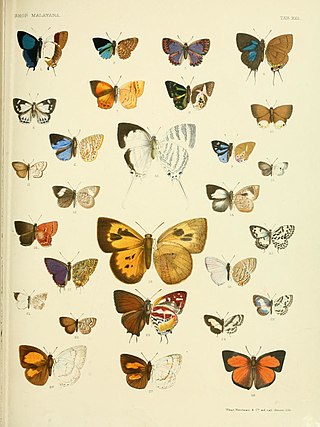
Logania is a genus of plants belonging to the family Loganiaceae. Native to Australia and New Zealand, the genus includes at least 24 species including herbs, shrubs, trees and climbers.

Jamides caerulea, the royal cerulean, is a small butterfly that belongs to the lycaenids or blues family. It was described by Herbert Druce in 1873. It is found in the Indomalayan realm.

Jamides, commonly called ceruleans, is a genus of butterflies in the family Lycaenidae. The species of this genus are found in the Indomalayan realm, the Palearctic realm and the Australasian realm.

Allotinus is a genus of butterflies in the family Lycaenidae. The genus was erected by Cajetan Felder and Rudolf Felder in 1865. The members (species) of this genus are found in the Indomalayan realm.

Nacaduba angusta, the white lineblue, is a lycaenid butterfly found in South Asia. The species was first described by Herbert Druce in 1873.

Prosotas aluta, the banded lineblue, is a species of blue butterfly (Lycaenidae) found in Asia. The species was first described by Herbert Druce in 1873.
Herbert Druce, FLS was an English entomologist.

Nacaduba is a genus of gossamer-winged butterflies (Lycaenidae). It constitutes many of the species commonly called "lineblues". As they are the genus initially erected to contain all lineblues, they might be considered the "typical" lineblues, as opposed to the species relatives now separated in Catapyrops, Prosotas and Petrelea.

Catapaecilma is a genus of butterflies in the family Lycaenidae. The species of this genus are found in the Indomalayan realm.

Cheritra is the genus of "typical" imperials, butterflies in the family Lycaenidae. The species of this genus are found in the Indomalayan realm.

Logania is a genus of butterflies in the family Lycaenidae.

Tajuria is an Indomalayan genus of butterflies in the family Lycaenidae.

Thrix is a monotypic butterfly genus in the family Lycaenidae first described by William Doherty in 1891. Its one species is Thrix scopula, which was first described by Herbert Druce in 1873. It is found in the Indomalayan realm.

Seseria is an Indomalayan genus of spread-winged skippers in the family Hesperiidae.

Papilio lowi, the great yellow Mormon or Asian swallowtail, is a butterfly of the family Papilionidae. The species was first described by Herbert Druce in 1873. It is found in Borneo, Indonesia, and the Philippines.

Hamilton Herbert Charles James Druce was an English entomologist who specialised in Lycaenidae and to a lesser extent Hesperiidae. He is not to be confused with his father, the English entomologist Herbert Druce (1846–1913) who also worked on Lepidoptera.

Allotinus nivalis is a butterfly in the family Lycaenidae. It was described by Herbert Druce in 1873. It is found in Southeast Asia.

Lycaenopsis haraldus, Felder's Hedge Blue, is a butterfly in the family Lycaenidae. It was described by Johan Christian Fabricius in 1787. It is found in the Indomalayan realm.

Logania marmorata, the pale mottle, is a butterfly in the family Lycaenidae. It was described by Frederic Moore in 1884. It is found in the Indomalayan realm.

Logania malayica, the Malayan mottle, is a butterfly in the family Lycaenidae. It was described by William Lucas Distant in 1884. It is found in the Indomalayan realm.



















